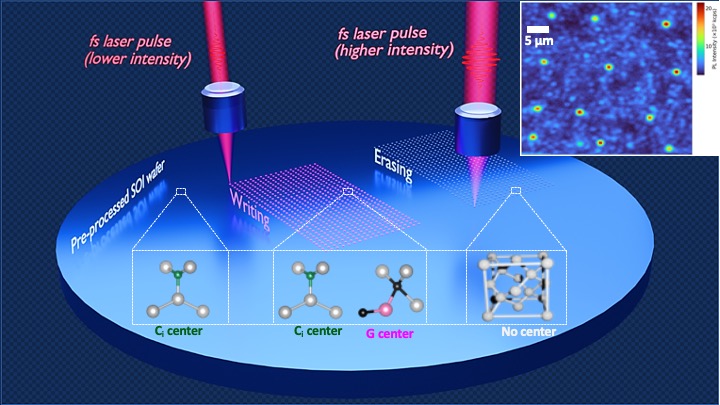Adapted from a Berkeley Lab press release

Quantum computers have the potential to solve complex problems in human health, drug discovery, and artificial intelligence millions of times faster than some of the world’s fastest supercomputers. A network of quantum computers could advance these discoveries even faster. But before that can happen, the computer industry will need a reliable way to string together billions of qubits – or quantum bits – with atomic precision.
Connecting qubits, however, has been challenging for the research community. Some methods form qubits by placing an entire silicon wafer in a rapid annealing oven at very high temperatures. With these methods, qubits randomly form from defects (also known as color centers or quantum emitters) in silicon’s crystal lattice. And without knowing exactly where qubits are located in a material, a quantum computer of connected qubits will be difficult to realize.
But now, getting qubits to connect may soon be possible. A team of Foundry users says that they are the first to use a femtosecond laser to create and “annihilate” qubits on demand, and with precision, by doping silicon with hydrogen.
The advance could enable quantum computers that use programmable optical qubits or “spin-photon qubits” to connect quantum nodes across a remote network. It could also advance a quantum internet that is not only more secure but could also transmit more data than current optical-fiber information technologies.
“To make a scalable quantum architecture or network, we need qubits that can reliably form on-demand, at desired locations, so that we know where the qubit is located in a material. And that’s why our approach is critical,” said Kaushalya Jhuria, Foundry user and a postdoctoral scholar in Berkeley Lab’s Accelerator Technology & Applied Physics (ATAP) Division. She is the first author on a new study that describes the technique in the journal Nature Communications. “Because once we know where a specific qubit is sitting, we can determine how to connect this qubit with other components in the system and make a quantum network.”
The new method uses a gas environment to form programmable defects called “color centers” in silicon. These color centers are candidates for special telecommunications qubits or “spin photon qubits.” The method also uses an ultrafast femtosecond laser to anneal silicon with pinpoint precision where those qubits should precisely form. A femtosecond laser delivers very short pulses of energy within a quadrillionth of a second to a focused target the size of a speck of dust.
Interested in Becoming a Foundry User?
Join our collaborative, multidisciplinary environment.
Learn more >
Spin photon qubits emit photons that can carry information encoded in electron spin across long distances – ideal properties to support a secure quantum network. Qubits are the smallest components of a quantum information system that encodes data in three different states: 1, 0, or a superposition that is everything between 1 and 0.
The researchers learned that processing silicon with a low femtosecond laser intensity in the presence of hydrogen helped to create the Ci color centers. Further experiments showed that increasing the laser intensity can increase the mobility of hydrogen, which passivates undesirable color centers without damaging the silicon lattice, Schenkel explained.
A theoretical analysis performed by Liang Tan, staff scientist in the Theory facility, shows that the brightness of the Ci color center is boosted by several orders of magnitude in the presence of hydrogen, confirming their observations from laboratory experiments.
The team plans to use the technique to integrate optical qubits in quantum devices such as reflective cavities and waveguides, and to discover new spin photon qubit candidates with properties optimized for selected applications.
Read the full press release

